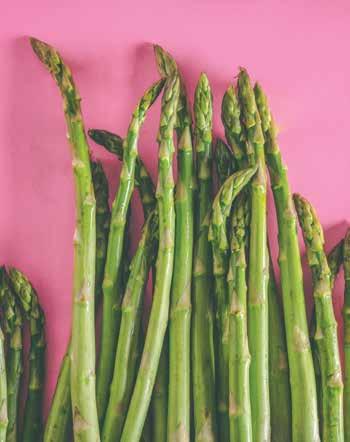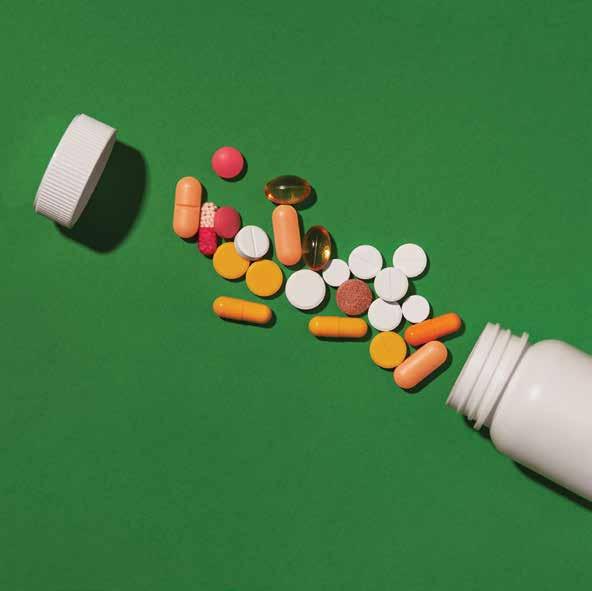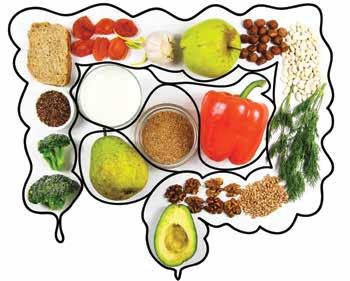
9 minute read
Fitness Tips
EXERCISING ON YOUR PERIOD?
By Dylan Roche
There’s a longstanding misconception out there that women shouldn’t exercise while on their period—and that doing so could even make them more vulnerable to injuries. While it’s certainly understandable that women may not be in the mood at times to exercise during menstruation, health experts agree there’s no serious risk to engaging in physical activity, and the benefits of exercise can actually help offset some of the negative symptoms.
Here’s what you should know:
WARNINGS ABOUT PERIOD-RELATED EXERCISE
INJURIES ARE UNSUBSTANTIATED. Over the past few decades, a handful of studies have looked at female athletes who have been injured during their premenstrual period or menstrual period, but there’s not a conclusive connection, according to Harvard Medical School. In fact, plenty of women have successfully competed (and won!) while menstruating. Fu Yuanhui, the Chinese swimmer who took home the bronze for the 100-meter backstroke at the 2016 Olympics, made headlines for openly discussing the fact that she raced while on her period.
EXERCISE CAN ACTUALLY MAKE YOUR PERIOD
MORE BEARABLE. Most people know about the way exercise relieves stress and makes your body release feel-good endorphins. Those same benefits apply even when a woman is going through PMS. Additionally, exercise improves circulation, which can reduce cramps, and raises energy levels, which can stave off headaches and fatigue.
A MENSTRUAL CUP WORKS BETTER THAN TAMPONS OR PADS.
Some women are worried about exercising on their period because of the physical discomfort they have with a pad or tampon. Pads can chafe, and certain moves—such as squats—might cause leakage with a tampon. Many female athletes find they’re much more comfortable and reassured using a menstrual cup.
IT DOESN’T HAVE TO BE AN INTENSE WORKOUT.
Even if you don’t have the energy or stamina to do your regular workout on your period, a little bit of light activity can still deliver the benefits you’re hoping for. Go for a walk, do some gentle yoga, or engage in some light calisthenics.
A missed period could be a sign of overtraining. While some women are taking rest days because of their period, there’s also the opposite problem—some women are training themselves so hard that their period stops altogether. This state is called amenorrhea and it can happen when nutritional needs are not met to fuel the body during these intense training periods. To preserve energy, the body shuts down functions that aren’t necessary for survival, including the reproductive system. However, overtraining might not be the only cause; if you notice your period is irregular or has stopped, consult your doctor.

Fresh Take
ASPARAGUS
By Dylan Roche
Spring is a time of year when flowers are all in bloom—including asparagus.
That’s right. This green vegetable is, botanically speaking, actually a flower. Those parts we prepare and eat are actually shoots, and if they were left to mature, the buds at the end of each spear would open up and sprout ferny leaves. It would look pretty (some people even use mature asparagus, which is known as “sparrow grass” in folk culture, as part of floral arrangements) but the asparagus would then take on an unpleasant woody taste.

Harvested at just the right time, however, and prepared in just the right way, asparagus has a savory flavor reminiscent of a blend between broccoli and green beans. It’s also in its peak season in April and May, making it an ideal addition to spring meals.
The Produce for a Better Health Foundation encourages people to look at the spearlike shape of asparagus and think of it as a weapon for fighting off carcinogens and free radicals—this is because asparagus is rich in antioxidants, particularly glutathione, the same antioxidant found in abundance in kale and Brussels sprouts that the National Cancer Institute describes as a “potent cancer fighter.” Asparagus is also one of the best sources of folic acid, also known as folate or Vitamin B9. This mighty B vitamin is necessary for the formation of red blood cells to carry oxygen all around the body. Folic acid is especially important for women who are pregnant or trying to get pregnant because a deficiency could result in major birth defects of the baby’s brain (anencephaly) or spine (spina bifida), according to the Centers for Disease Control and Prevention.
In addition to folate, other nutrients in asparagus include Vitamin A (good for healthy vision and immunity), Vitamin C (important for the formation of blood vessels, cartilage, and muscle), and Vitamin K (necessary for blood clotting and healing), all at about only four calories per spear.
On the subject of the way the body breaks down and uses asparagus, it’s worth noting that some people will
Asparagus Casserole
INGREDIENTS:
1 1/2 pounds asparagus 3 cups sliced white mushrooms 2 cups cooked green peas 1 cup sundried tomatoes 1/4 cup crushed whole-grain crackers 1/4 cup parmesan 1/4 cup shredded swiss cheese 1/4 cup olive oil 1 teaspoon garlic 1 teaspoon dried thyme 2 teaspoons dried basic 1 teaspoon salt 1 teaspoon black pepper
DIRECTIONS:
Preheat the oven to 400 degrees Fahrenheit. In a small bowl, combine the olive oil, garlic, thyme, basil, salt, and pepper. Trim asparagus into six-inch pieces and line them along the bottom of a standard 12x8-inch casserole dish. Brush generously with oil, then add a layer of mushrooms, peas, and sundried tomatoes. Add another layer of asparagus and brush with oil. Alternate layers up to the top of the dish. In a separate small bowl, combine parmesan, shredded swiss cheese, and cracker crumbs. Sprinkle atop the layered vegetables. Cover with glass top or aluminum foil and bake for approximately 30 minutes. Remove the cover and continue baking for another 5–10 minutes. The top layer of the casserole should be golden brown and bubbly.

notice their urine has a distinct odor after eating asparagus. According to Harvard Medical School, this happens because the human body sometimes forms sulfuric chemicals when it metabolizes acids in the asparagus. Don’t notice the smell? Everyone metabolizes asparagus differently, and some people might not be affected.
When you’re at the grocery store or farmers’ market to pick up asparagus, seek out the stems that are a uniform green color from end to tip, avoiding any that look limp or wilted. After you get them home, dampen a towel and wrap it around the ends, then place the wrapped asparagus in a plastic bag to store in the fridge for up to four days, per the advice of the Produce for a Better Health Foundation.

The easiest way to prepare asparagus on warm spring days is to toss it with some olive oil and lemon juice, then place it on a hot grill to sizzle until it’s tender. But if you’re looking for some more creative ways to use this veggie, here are two recipes that are sure to impress. Asparagus Gazpacho
INGREDIENTS:
1 pound asparagus, steamed 4 avocados, pitted and scooped from their skins 1 1/2 cup milk 2 tablespoons minced garlic 1 lemon, juiced 1 lime juiced 2 tablespoons olive oil 1/2 teaspoon cumin 1/2 teaspoon turmeric 1/4 teaspoon cayenne 1 teaspoon salt 1 teaspoon black pepper
DIRECTIONS:
Add all ingredients to a food processor or high-power blender and process until smooth. Transfer to a container and allow to chill completely before serving. Garnish with kale leaves if desired. HEALTH & BEAUTY HEALTH

Probiotics:
MAGIC PILLS OR MARKETING PLOY?
By Dylan Roche
Bacteria has such a bad reputation, but it’s important to remember that it’s not all harmful stuff. Some bacteria are actually good for you—specifically, the live, active microorganisms known as probiotics. You might have heard of them because they’ve been gaining popularity in health and wellness circles for more than a decade now.
Certain foods are hailed as being rich in probiotics, and there are supplements available on store shelves in pharmacies and health food stores. But is it worth all the hype? Well, yes and no.
Probiotics are healthy, but they might not be the cure-all that some consumers expect them to be. Furthermore, those consumers might not be getting quite the dose of probiotics they expect when they buy supplements right off the store shelf.

Back up, though. I’m supposed to be consuming bacteria?
That’s right. Probiotics help feed the gastrointestinal microflora that naturally exists in your digestive tract—the microflora that helps your body break down food, offset bad bacteria, and support your immune system.
The problem is that sometimes the bacteria in your gut aren’t quite present in the amount they should be. Maybe this is because your diet hasn’t been great, or maybe it’s because of a recent bout of illness. It could even be because you’re on an antibiotic, which will result in good bacteria being killed off just as much as the bad bacteria.
By ingesting probiotics, you can help set the balance of bacteria in your guy right again. Research suggests—but hasn’t proven conclusively—that this reset balance can prevent or treat digestive problems like diarrhea or irritable bowel syndrome, boost your immune system, offset inflammation, and alleviate your allergies.
You mentioned that these bacteria are sometimes found in food?
Specifically, fermented foods. When food is preserved via fermentation, bacteria convert the carbohydrates to alcohols and acids so that the food doesn’t spoil. This fermentation process also gives foods a distinctive pungent taste. More importantly, it promotes the growth of good bacteria.
You’re probably familiar with fermented foods like yogurt, sauerkraut, and pickles—these are all rich in good-for-you bacteria. Other less recognizable fermented foods include miso (a Japanese seasoning made from soybeans typically used in soup), kimchee (a Korean dish made of fermented vegetables), kefir (a type of drinkable yogurt), and tempeh (a patty made of fermented soybeans that’s popular in Indonesian culture).
Just as important as probiotics are those foods known as prebiotics—high-fiber foods that feed the microorganisms, thus contributing to the balance in your digestive tract. Prebiotic foods recommended by the Mayo Clinic are whole grains, bananas, and green vegetables.
But I can take a supplement?
In theory, supplements will have a higher concentration of probiotics than food will. But it’s not necessarily a reliable source. Some strains of bacteria die out in heat, moisture, oxygen, and even bright light. Because of this, certain brands of supplements state on their label that they should be kept refrigerated. In general, check the storage instructions on any probiotics you’re buying and pay close attention to the expiration date.
It’s also good to remember that dietary supplements aren’t tested and regulated the same way medicine is, and it’s up to the manufacturers to make sure their products do what they say they will do. Even if your shelf-stable probiotic says it can be kept at room temperature, some of its bacteria may have already died out—which means you’re not getting quite as many live, active microorganisms as you expect.
Anything else I should know?
For the most part, probiotics are considered safe, but people with sensitive stomachs could potentially experience mild digestive side effects such as gas. People who are immunocompromised could suffer serious complications and infections. You also don’t know how probiotics will interfere with other medicines you’re taking, so always check with your doctor before you start taking them or any other kind of supplement.











